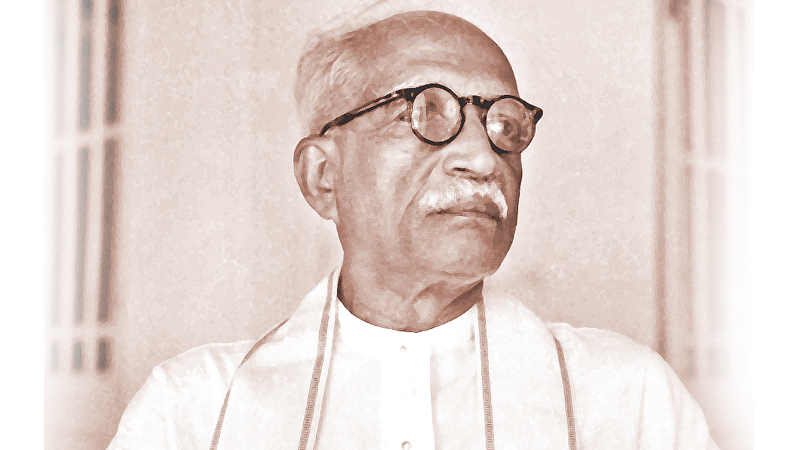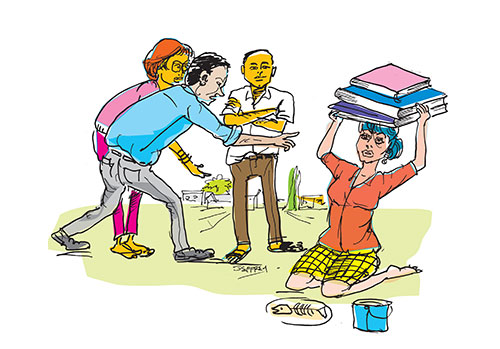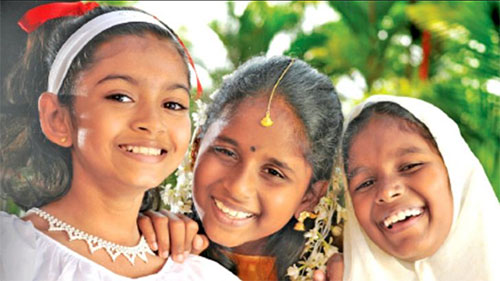by Ramya Kumar
I teach in a postgraduate programme on gender and health offered by the Faculty of Medicine, Colombo. In the module I coordinate on gender-responsive healthcare, we discuss, among other things, the experience of LGBTIQ+ persons within the health sector. The situation is quite bleak. According to the activists who teach in the module, most health professionals lack basic training on delivering sex-/gender-responsive health services. A 2023 study carried out by EQUAL GROUND in six districts (Colombo, Galle, Jaffna, Kandy, Matale, Polonnaruwa) describes varied experiences of stigmatization, discrimination, verbal/physical abuse and sexual harassment in the hands of healthcare providers.
These conversations led me to reflect on the situation of LGBTIQ+ folk at our universities. A 2021 nation-wide survey among 4500 people in all 25 districts in the country found 12% of the population identified as LGBTIQ+ (EQUAL GROUND 2021). This means over 10 percent of our students (and staff) may identify as belonging to these groups. Yet, they remain invisible within universities. At the Faculty of Medicine, Jaffna, where I teach, I have had just one student confide in me about their sexual orientation during the past eight years. I recall attending an event organized by a trans advocacy group in Jaffna when a medical student swiftly left the premises on my entry, probably fearing I would find out about their sexual orientation/gender identity. When I reached out through my networks to academics at other state universities, they reported similar experiences, indicating the sorry state of affairs at universities.
‘Hetero’ campuses
Heteronormativity assumes most or all people are straight and cisgender. Heteronormative institutions, like our universities, promote heterosexuality and the gender binary. An academic at Peradeniya University observed, “I should imagine that universities are not easy for those who are uncomfortable with a rigid gender binary… when these norms are violated, during the ragging period for instance, the consequences can be quite harsh.” Students are reluctant to express their sexual orientation openly. It is rare to see butch or femme students (or anything in between) on our campuses. Another staff member at Peradeniya suggested that the situation of staff may be marginally better, “No staff [in our faculty] is openly gay, and while among staff, a live and let live sentiment might exist, it is harder for students…”
Several academics identified ragging as an apparatus that sustains heteronormativity. As a professor explained, “…ragging is hugely reliant on imposing sexual normativeness, even as it sneakily flirts with marginal sexuality. This double bind of ragging has to be addressed and recognized for what it can do to vulnerable people, particularly sexually marginalized communities of students.” Whether among staff or by students, attire is strictly monitored with dress codes in place at many faculties. According to an academic at Jaffna University, “The ban on shorts imposed by our university with the strong backing of the students should be understood as an attempt to control and regulate people’s expressions of gender.” The university ‘subculture’ excludes LGBTIQ+ persons from certain spaces, for instance, the unwritten rule that only (heterosexual) couples may venture into the much talked about Lover’s Lane at Peradeniya.
Sadly, university and faculty administrations promote heterosexual and cis-gender norms in various ways. Several health professional programmes implement dress codes, frequently discriminating against certain genders (and ethnicities). Some faculties of medicine ban specific forms of dress on campus, even outside hospital settings. For example, one of the faculties specifies that denim jeans, tank tops, t-shirts, tops with thin straps, mini-skirts/dresses, shorts, capri pants, rubber slippers, and niqab are not acceptable for women, and t-shirts, denims, combat pants, shorts, three-quarter pants, slippers and rubber slippers are no-no’s for men. Such dress codes leave LGBTIQ+ students (and others) with fewer options.
The built environment of the university places transgender folks in an uncomfortable place. Most universities do not have gender neutral washrooms. A similar problem exists in relation to student hostels and halls of residence, which are strictly segregated by gender. Concerns about violence in the halls of residence against trans people deter them from using university accommodation. Similar fears compel trans students to wait till they complete their degree programmes to commence the transitioning process. “A university student I once worked with said, ‘I’ll wait until I finish my BA before I decide to transit to a male identity’”, said a staff member from Peradeniya.
However, covert expressions of gender/sexual diversity do exist in campus settings. Graffiti can be an interesting indicator and there are more non-normative sexual practices out there on campus, than people want to talk about. In some universities, it is not uncommon for students to include drag in theatrical productions, although often borrowing derogatory tropes from South Asian cinema.
Ignorance and prejudice
Any form of gender expression that rocks the gender boat would certainly be frowned upon by both the majority of staff and students. Cultural arguments are frequently put forward by conservative elements against addressing LGBTIQ+ concerns at universities. For instance, some assume that being ‘woke’ may result in cultural degradation, while others believe the push to decriminalize same-sex relations is driven by a ‘Western agenda’ that will eventually lead to a decline in the population. Others problematically link non-hetero/cis sexual orientations/gender identities to childhood trauma or sexual abuse.
Although bylaws/policies on gender equality/equity at universities commit to gender equality, it is unclear whether these policies aim to transcend the gender binary. Encouraging is that one such policy explicitly refers to “[promoting] equality and [combating] discrimination among the University’s employees and students, regardless of their gender, sexual orientation, gender identity and age.” Indeed, discussions on LGBTIQ+ concerns do take place tangentially at various forums, but often reach an impasse. In Peradeniya, these discussions are “for some unfathomable reason interspersed with sexist jokes and talk about how men are the marginalized group,” according to an academic at the university.
None of the universities explicitly offer support services for LGBTIQ+ students. As a senior lecturer at Colombo University stated, “As far as I know, there are no student groups or services in the university that are focused on supporting LGBTIQ+ students.” She went on to suggest that the students at her university may have better access to support services by virtue of the university being located in Colombo where several non-governmental organizations offer support. A Peradeniya academic described how Tamil-speaking counsellors trained in dealing with LGBTIQ+ concerns are virtually non-existent. Due to the lack of better options, students encounter counsellors who usually advise them to reject their preferred sexual orientation or gender identity as if taking on such identities is deliberate. “In the absence of counsellors who are specially trained in sensitivity and with the necessary training to handle trauma, students are trapped in a spell of inarticulation.”
Constrained positive spaces
At present, students rely on sympathetic friends and lecturers, if they do find the courage to come out openly. According to a lecturer at Colombo University: “Students appear to know which departments/staff members are allies … departments of English are usually known to be friendly spaces.” In rare instances, high-ranking university officials have expressed solidarity with LGBTIQ+ movements. A lecturer at the Jaffna pointed out, “A couple of years back the VC participated in an LGBTIQ walk organized by local activist group within the premises of the University…while such actions are encouraging and signal the existence of space to engage on these issues, what we need are changes at the level of governance, policy and curriculum.”
Positive spaces at universities are unlikely to flourish until we see changes in the Penal Code, which criminalize same-sex activity. A host of activist organizations and even the Sri Lanka College of Psychiatrists have called for decriminalizing ‘homosexuality’ and a change in article 365. The legal status of same-sex activity prevents students from coming out, although identifying as LGBTIQ+ is not a violation of the Penal Code. As a result, those who express their sexual orientation/gender identities overtly in the classroom tend to be more privileged, and critical discussions remain within closed environments.
What is ironic is that sexual orientation and gender identity have been historically fluid in this part of the world. As one professor explained, “If one takes epics like Mahabharata for instance, one can very easily see the embodiment of a plethora of identities. Down the passage of time, and across the world, we find these contestations. These discussions can create spaces for marginal voices to tell a story.” As members of the university community, we could work towards breaking the silence on LGBTIQ+ matters and creating positive space at our universities.



